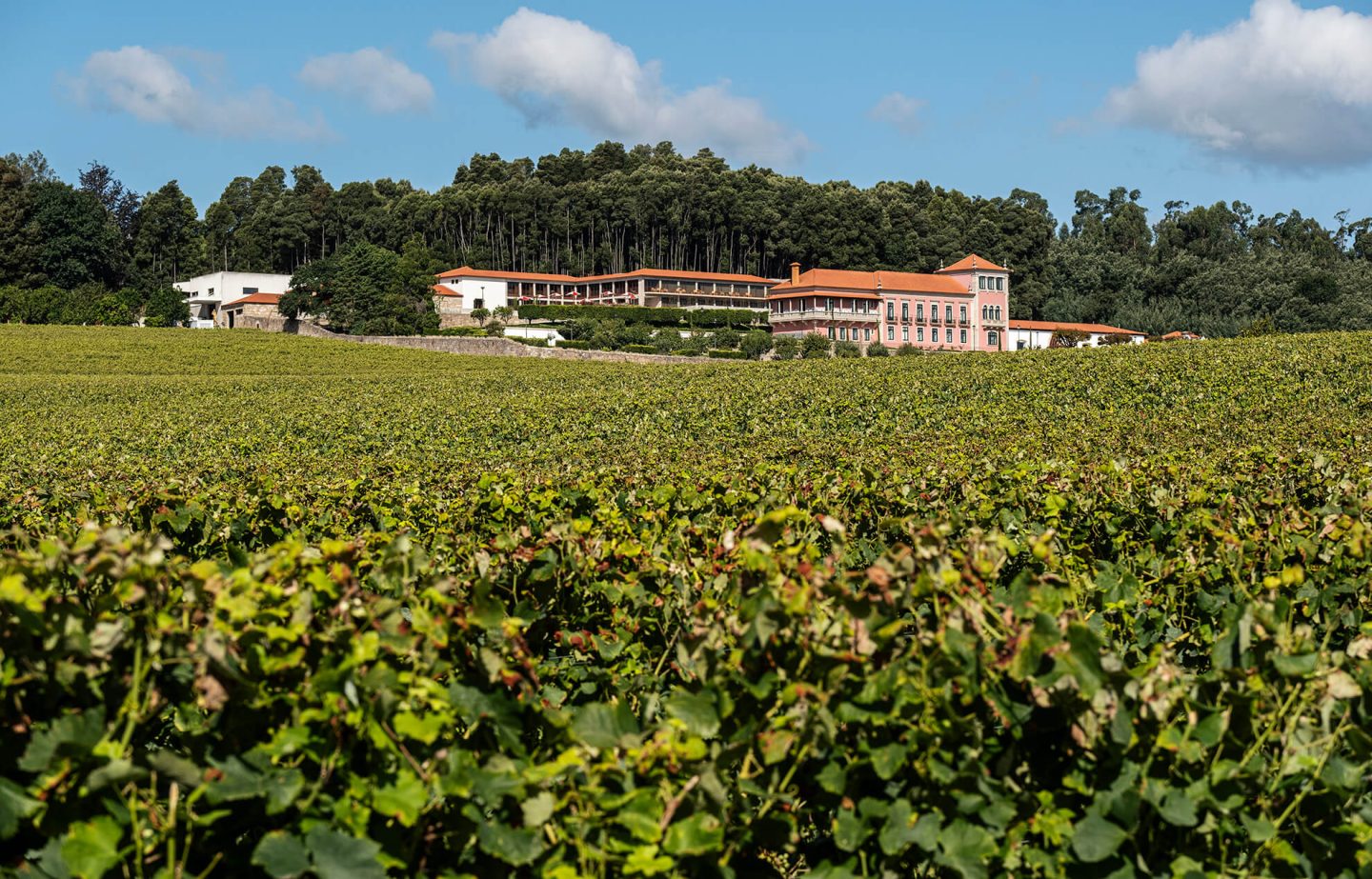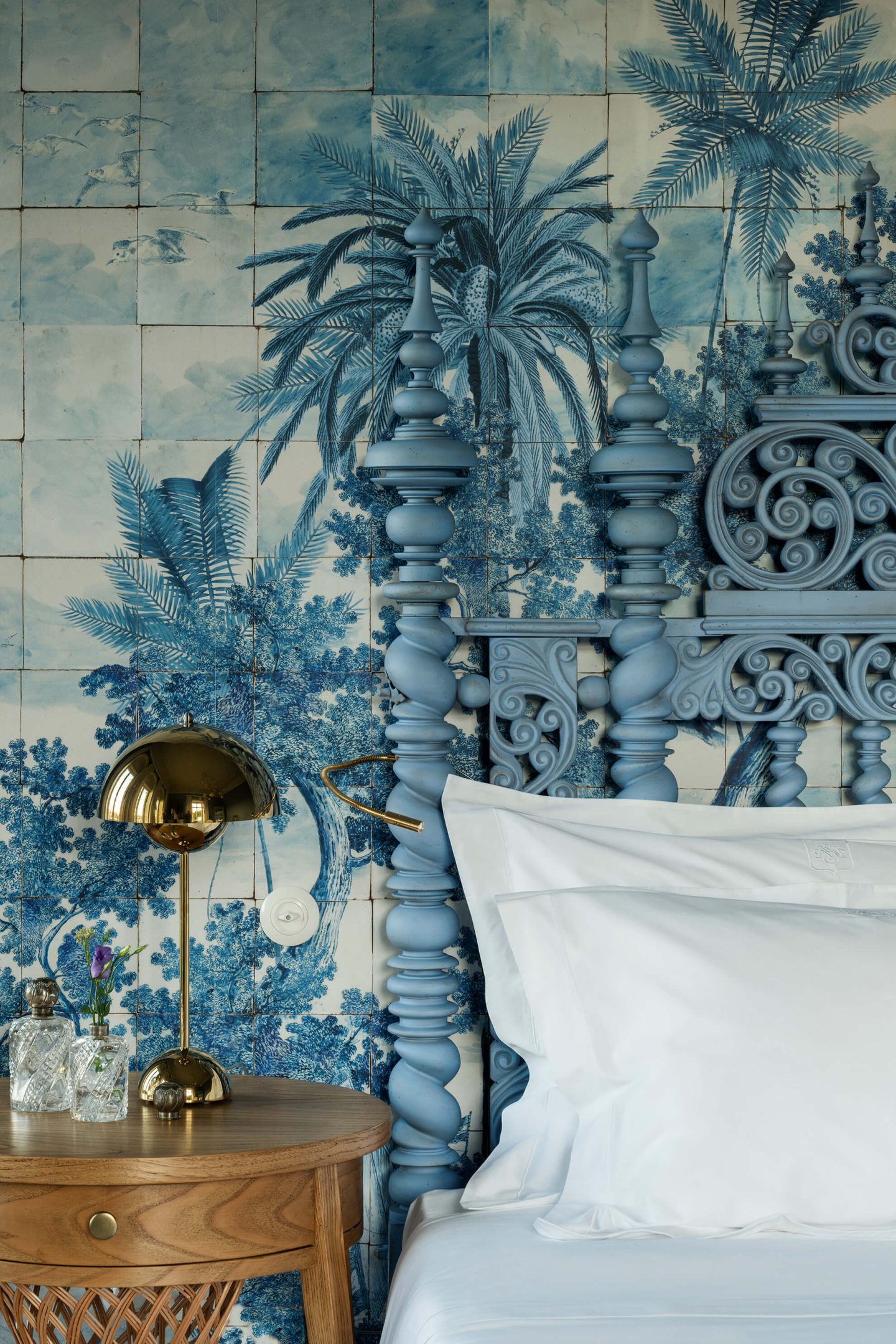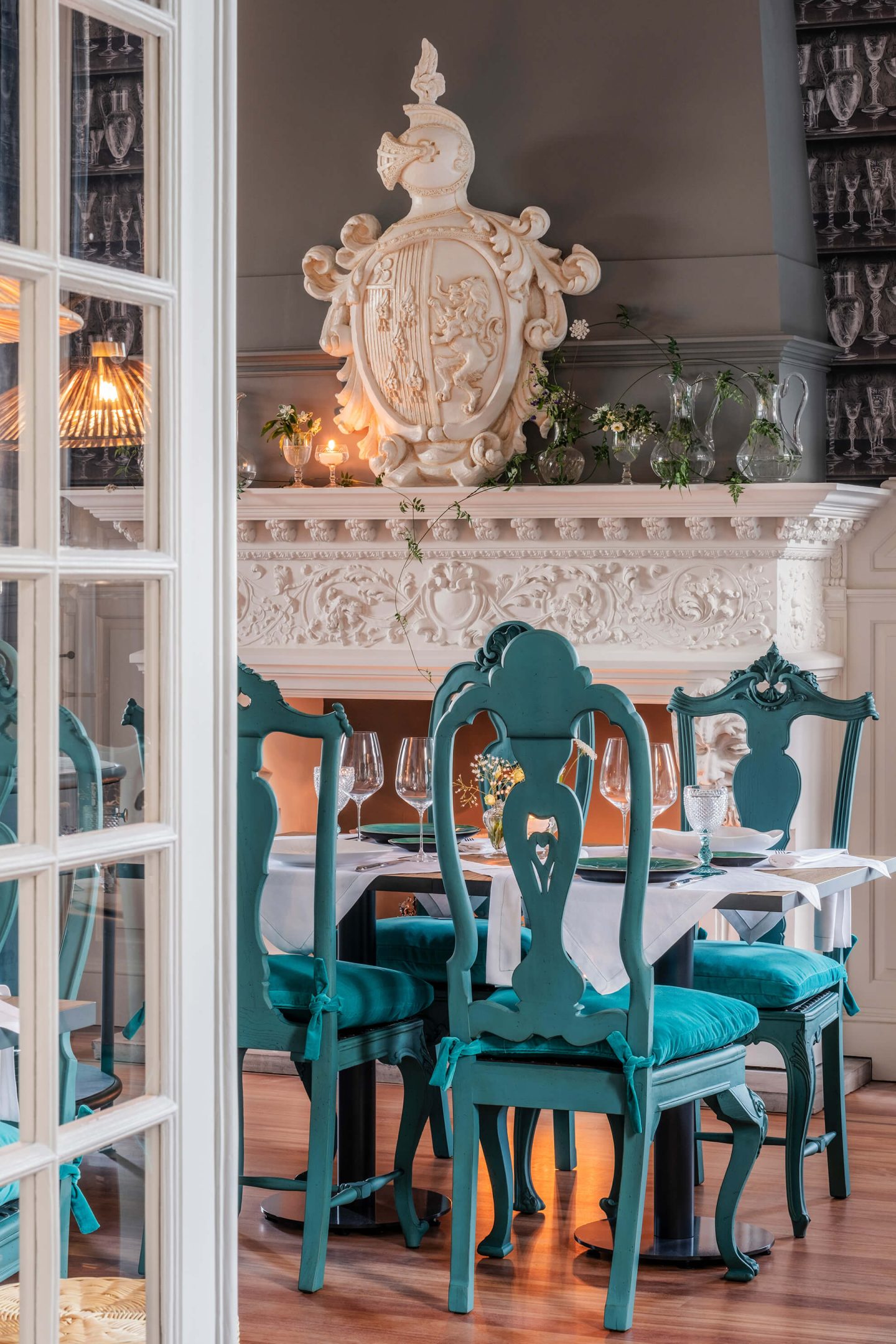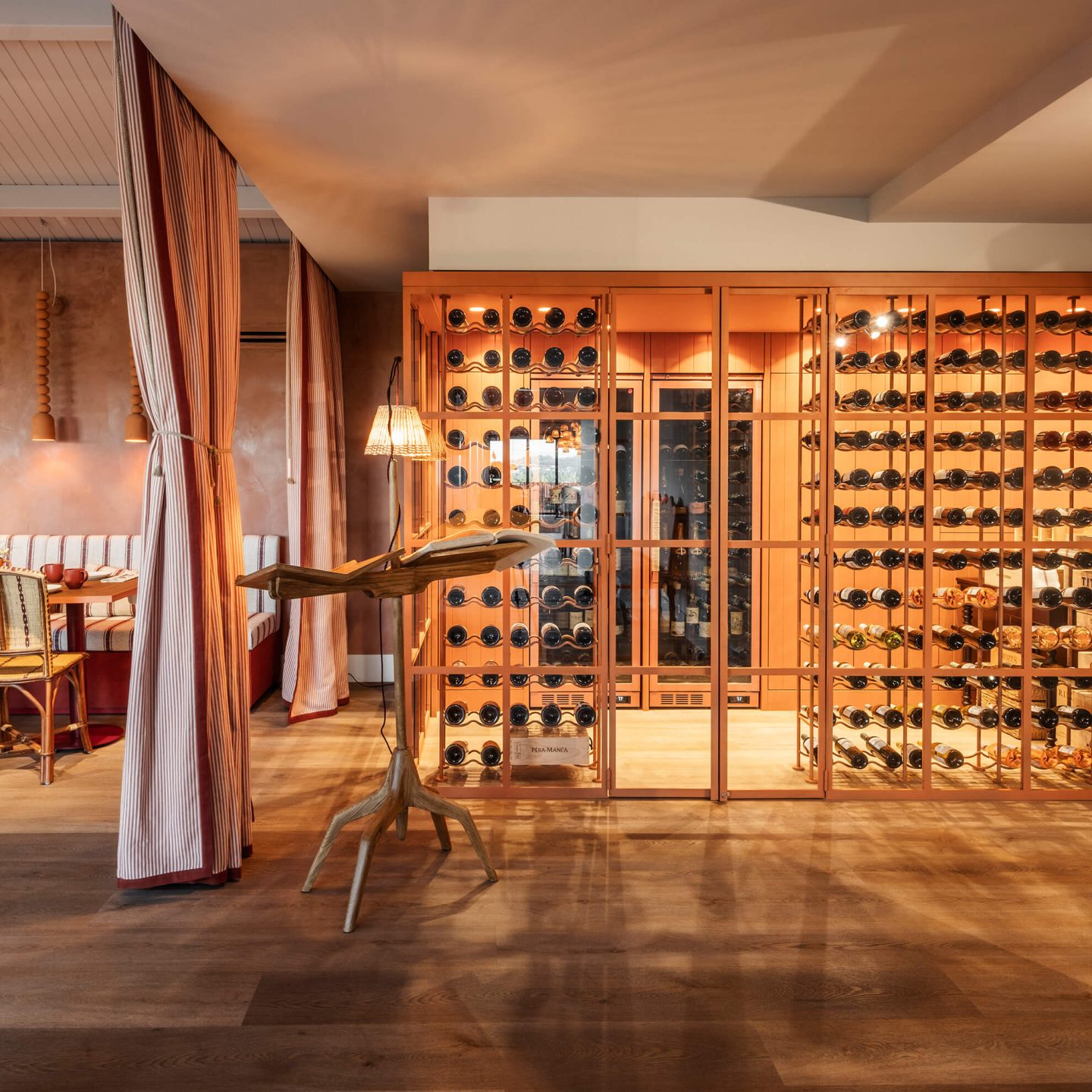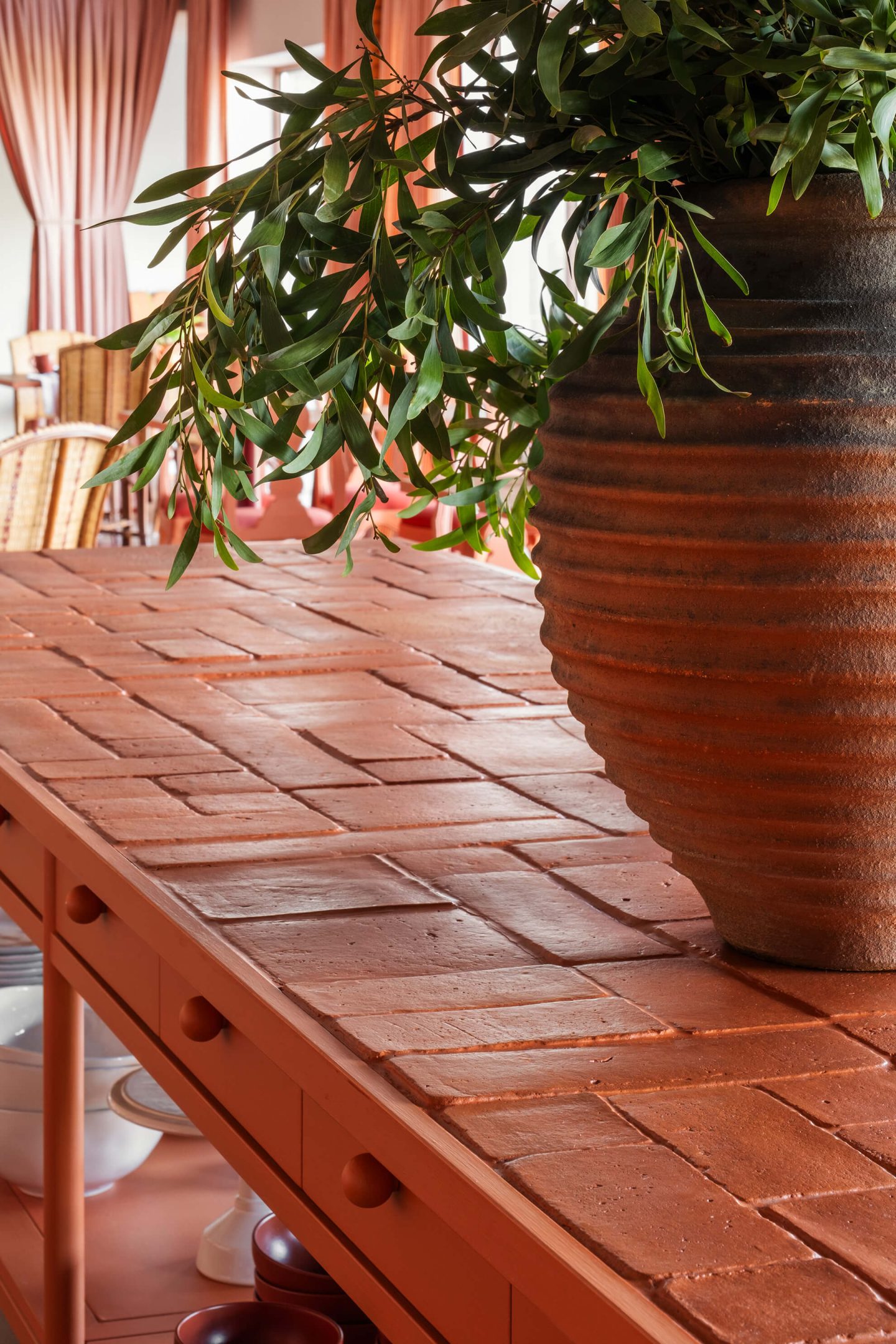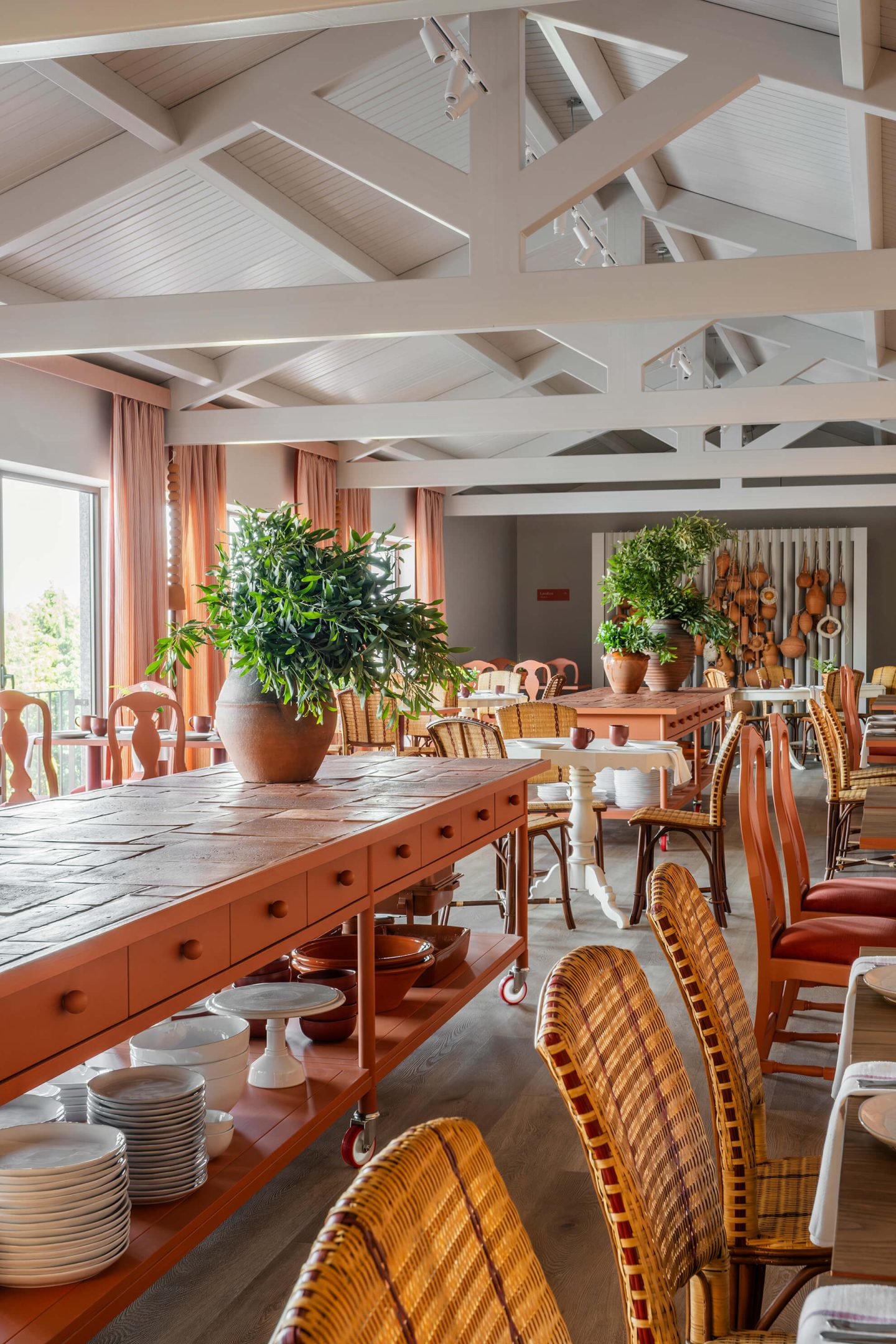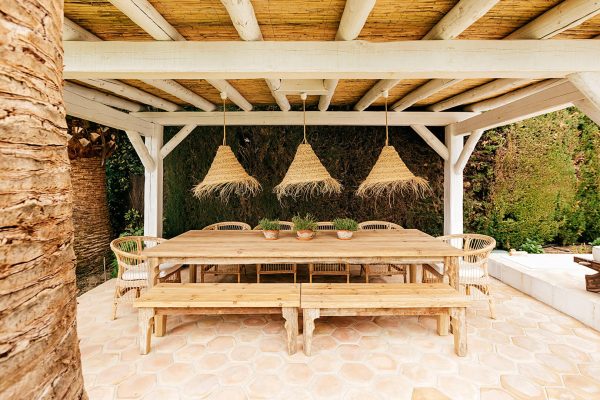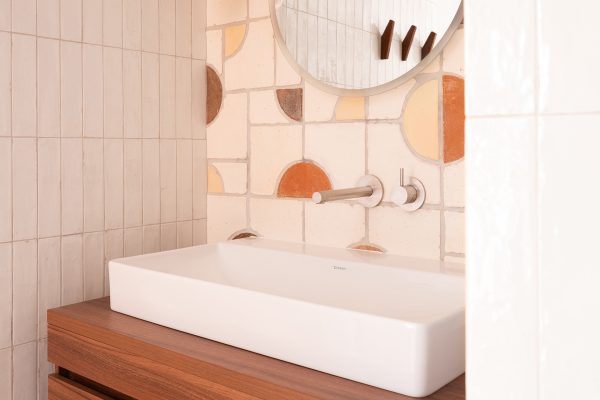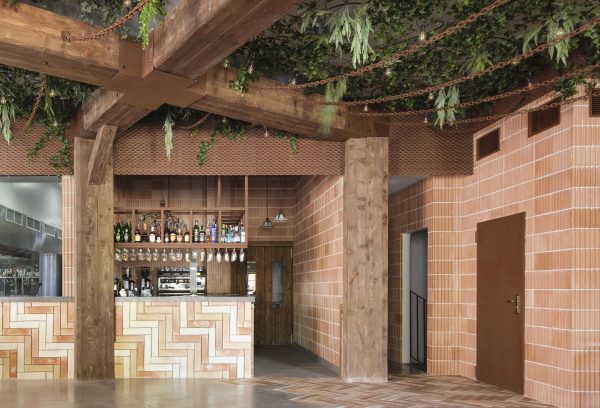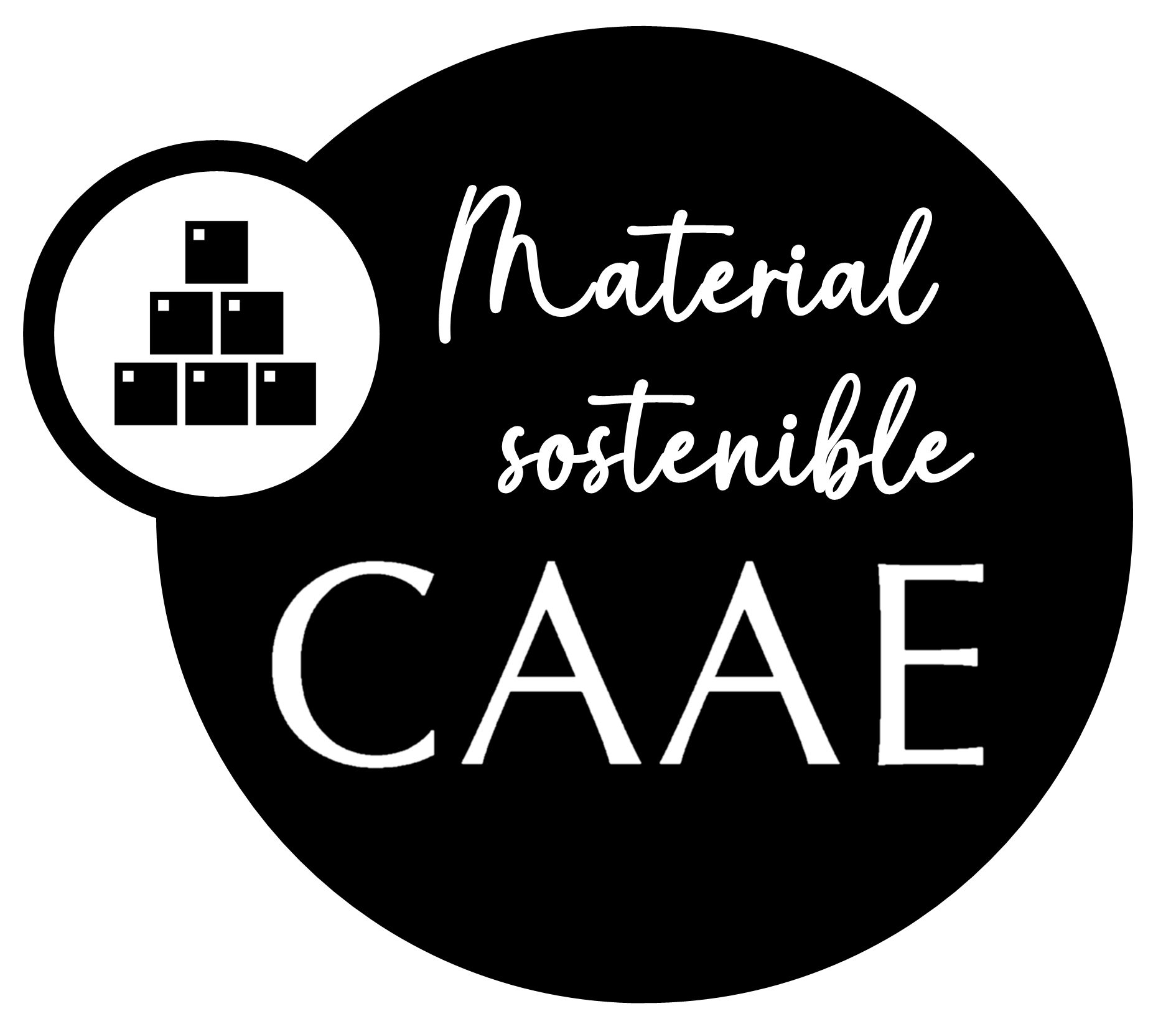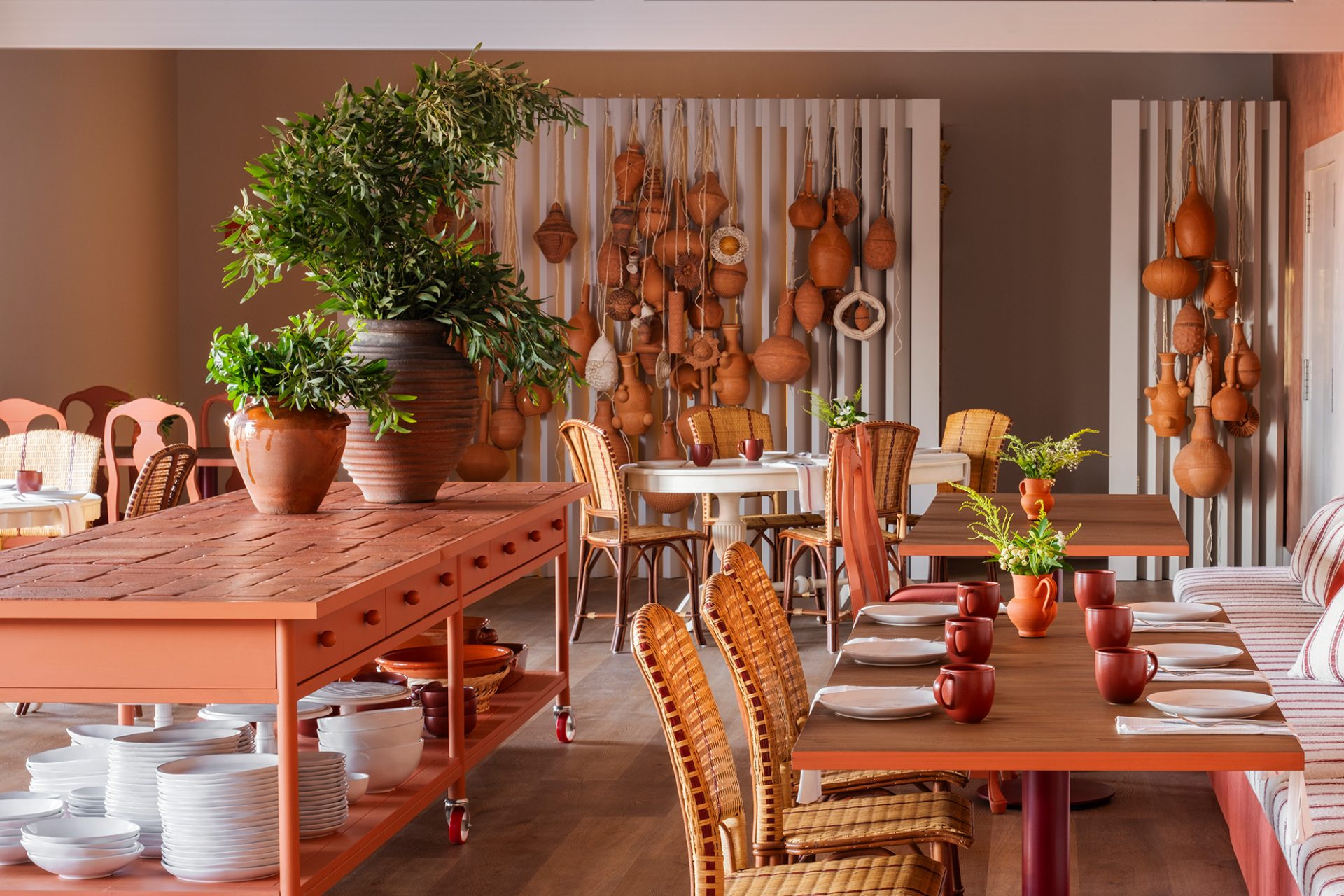
A terracotta tabletop for a hotel in Portugal
Our rust red tiles are chosen for the top of the buffet’s tables on this marvelous, recently renovated hotel in the portuguese countryside
Architect Joana Aranha’s firm signs the renovation project of the Solar de Vila Meã Hotel in the town of Barcelos, northeast Portugal. It’s an old villa, located in the middle of the dreamy portuguese landscape. The key to this particular success? According to the architect herself, it’s the use of local craftsmanship, the creative integration of outdated elements in a modern design, and the attention to detail. The terracotta tabletop that holds the central place of the buffet meets all three aforementioned requisites.
A project’s philosophy captured in one detail
Each photo of the renovation looks like a postcard, but we cannot stop bragging about the lovely spot we’ve been given. The studio has chosen our tiles Cuadrado 10, Cuadrado 30, Rectángulo 20×10 y Rectángulo 30×20 for the countertops of the buffet’s tables. The layout of the pieces, as well as the tables that hold them, have been designed entirely by the studio. It perfectly sustains the accent to the materials that the design itself gives.
One of the first things that meets the eye is the chromatic code of each space. And, in the case of the buffet, it’s the clay’s shades that prevails. It’s no coincidence that todobarro is on this project. Fired clay, or terracotta, is one of the most cherished materials of the region. The northwest of Portugal has a strong pottery tradition, and the intention of the project was to honour and highlight the cultural context of the hotel. It was therefore essential that terracotta should take the spotlight, and what better place than the buffet to do so.
Working with the imaginary of pottery
We feel like terracotta has found its perfect location here, because Joana Aranha has chosen to give terracotta its protagonism a room that we intrinsically associate with the imaginary of pottery.
Historically, it is in kitchens and dining rooms, especially in Mediterranean spaces, that we would find fountains, jars, pitchers and earthenware jars. It is also the space we associate with the freshness of water and the fire of cooking. But the real success lies in the opposite effect: the effect that the presence of terracotta has on the character of the room. By choosing terracotta worktops and handmade pottery decoration, we are implicitly saying that whatever we are about to be served to eat in this space is traditional, homemade, high quality. Food made over a slow fire, unhurried, with the stacked knowledge of millenary tradition.
Keeping pottery tradition in good health
As Aranha explains, the inspiration behind the project was “the exploration of local markets and the celebration of Portuguese craftsmanship”. The fact that our pieces have found a perfect place on this project only proves that the fired clay tradition flows freely along the Mediterranean belt. One of the things we love most about our work is the fact that we welcome and pour knowledge and techniques from other pottery traditions, and that is certainly a fundamental aspect of this project.
It is always a pleasure to work with studios and designers who have an interest in our product that goes beyond the aesthetic. It makes our work take on a deeper dimension, as we see part of our philosophy embodied and fixed in its final destination. And who doesn’t want to find affirmation among the idyllic vineyards of the Portuguese countryside?
